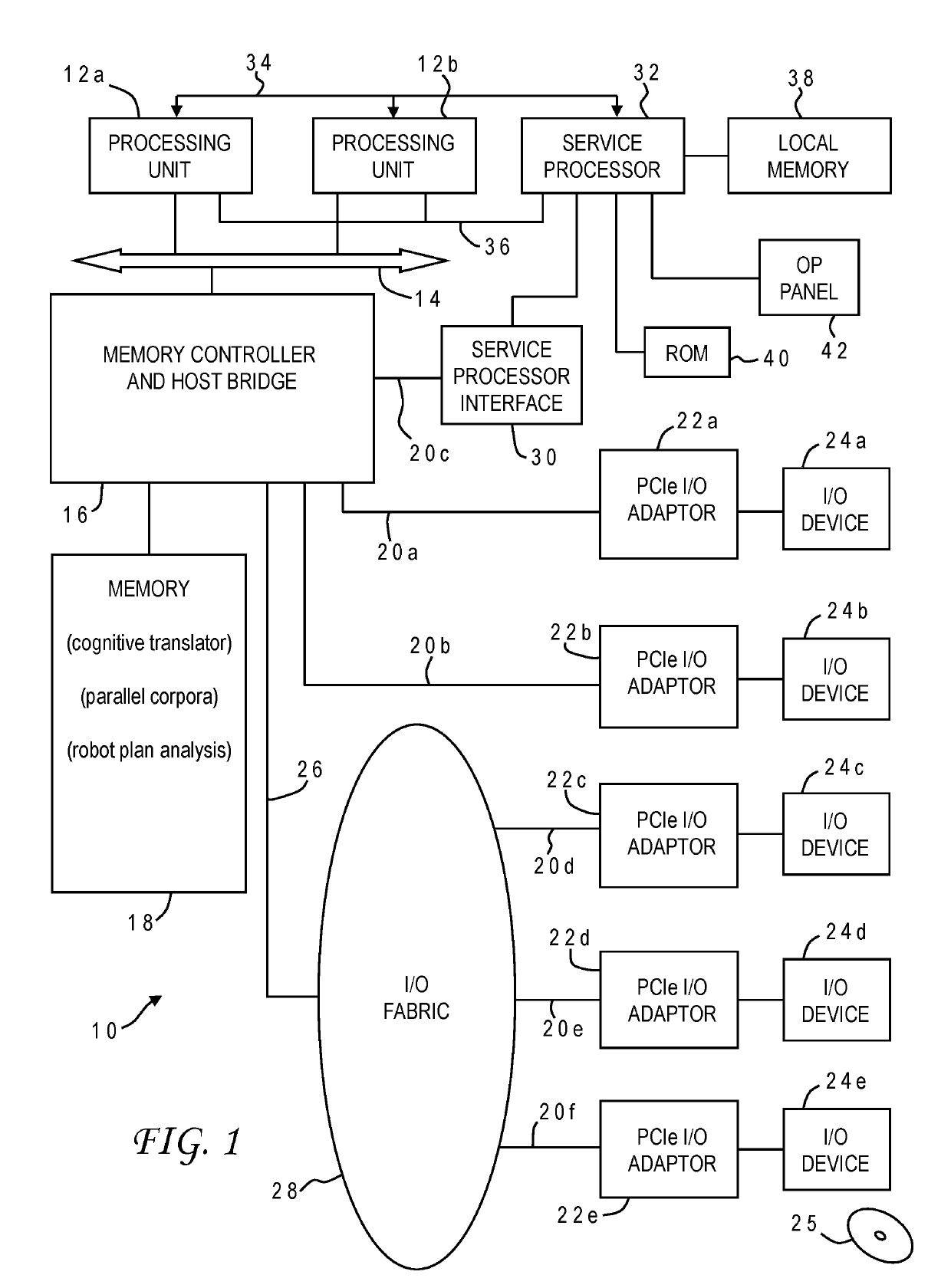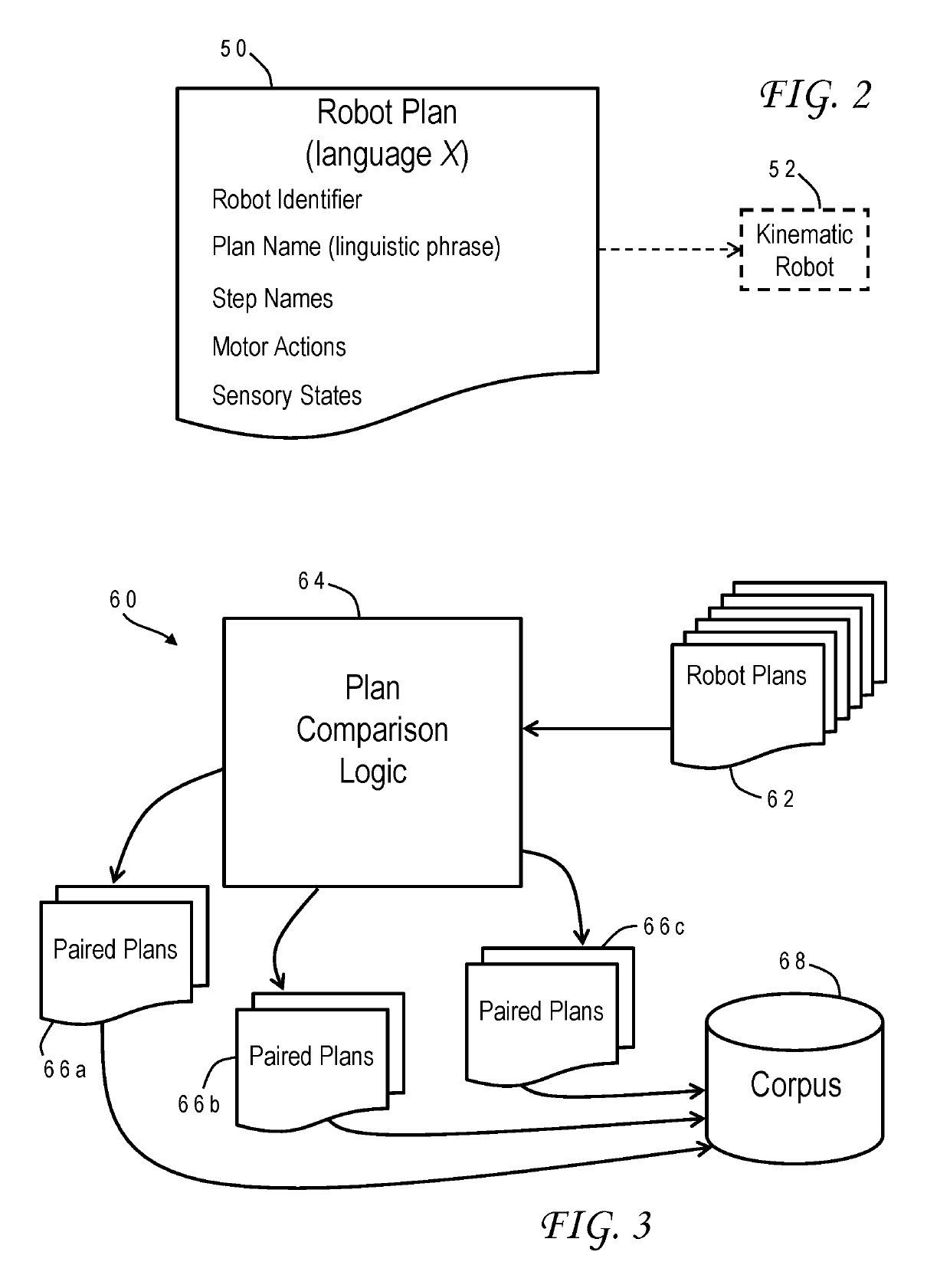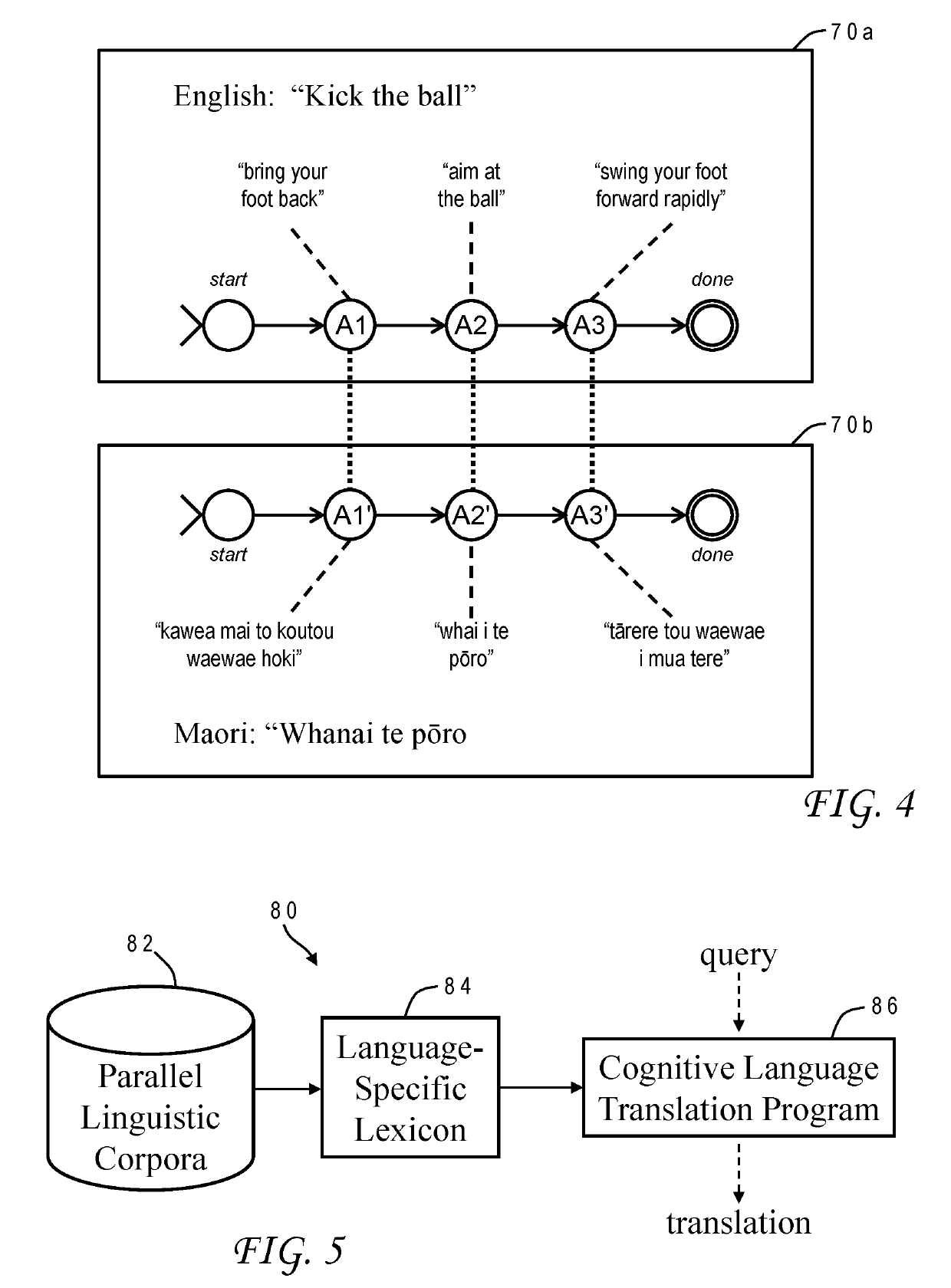Using robot plans as parallel linguistic corpora
a robot and parallel technology, applied in the field of language translation systems, can solve problems such as limited sensitivity
- Summary
- Abstract
- Description
- Claims
- Application Information
AI Technical Summary
Benefits of technology
Problems solved by technology
Method used
Image
Examples
Embodiment Construction
)
[0015]Modern high-quality language translation systems rely on parallel corpora for training. For some language pairs, such as English-French, this is easy to arrange since there are so many sources of parallel corpora. However, for other language pairs (especially in developing or third-world nations) there are no such parallel documents, or there are very few. This is especially true if the countries where the native speakers reside are far apart geographically. For instance, there is very little parallel material between Quechua (Peru) and Swahili (Tanzania) or Vietnamese. Moreover, there is some difficulty in aligning the words within existing corpora due to head-modifier order, complex case structure, gender, honorifics, ergativity, irregular verbs, and idioms.
[0016]It would, therefore, be desirable to devise an improved method of supplying parallel linguistic corpora for translation systems. It would be further advantageous if the method could be easily applied to a wider ran...
PUM
 Login to View More
Login to View More Abstract
Description
Claims
Application Information
 Login to View More
Login to View More - R&D
- Intellectual Property
- Life Sciences
- Materials
- Tech Scout
- Unparalleled Data Quality
- Higher Quality Content
- 60% Fewer Hallucinations
Browse by: Latest US Patents, China's latest patents, Technical Efficacy Thesaurus, Application Domain, Technology Topic, Popular Technical Reports.
© 2025 PatSnap. All rights reserved.Legal|Privacy policy|Modern Slavery Act Transparency Statement|Sitemap|About US| Contact US: help@patsnap.com



